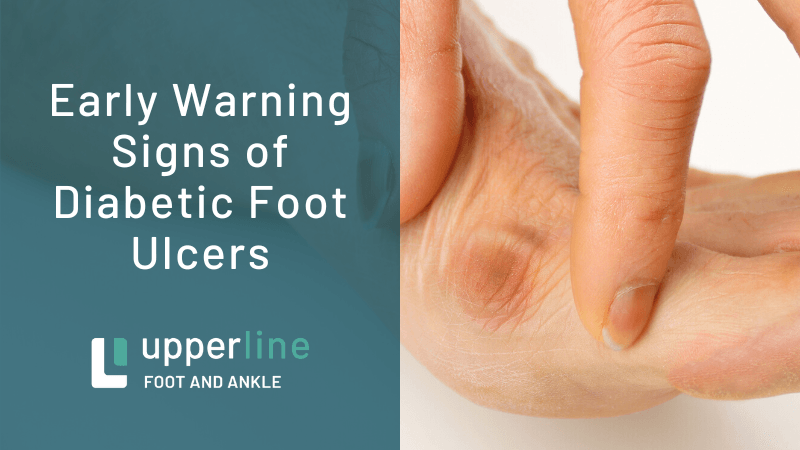Total Ankle Replacement Surgery with Dr. Christopher Reeves, Orlando, FL Foot and Ankle Surgeon
Audio Transcript
Dr. Reeves: The first one was a gentlemen. He was a about 70 years old. He and his wife were a year shy of celebrating their 50th anniversary and he had a terrible end stage ankle arthritis with a flat foot. We reconstructed the flat foot end and did an ankle placement. And what he was able to do at that point was one dance at his 50th wedding anniversary and two start going on cruises with his wife again and, and really kind changed their life and own allowed them to start going places that they had always wanted to go and doing the things they wanted to do.
Joe Crosby: Welcome to the elevator podiatrist, the show where we speak with top foot and ankle specialist from around the country. There is no appointment or copay required for this one-on-one Q and a only free advice from individuals who have devoted their lives to all things feet. I’m your host Joe Crosby. And today I’m joined by Dr. Christopher Reeves, but an ankle surgeon at Orlando foot and ankle clinic in Orlando, Florida.
Dr. Reeves: So I am Christopher Reeves. I practice in Orlando, Florida. I have been in practice now approximately 16 years. I grew up in Georgia originally and got into medicine early on in my, my my athletic career. I was a college athlete and went to a medical school down in I went to podiatric medical school down in Miami, Florida and did my residency training in Pittsburgh, Pennsylvania as well as the Rubin Institute of advanced orthopedics in Baltimore, Maryland. And I have been practicing in Orlando, Florida for for 16 years. I am a I’m a faculty member at Advent Health East podiatric surgical residency training program. And I’m also currently the president of the American college of Foot and Ankle Surgeons.
Joe Crosby: So today we’re we’re talking about total ankle replacement. So, you know, that’s a, I would say that’s a fairly broad term of, of, you know, in your industry, you know, there’s, there’s probably a lot that goes along with that. So I guess to start out, what would be the, you know, why, why would I need, you know, as a patient, why would I need a total ankle replacement? At what point am I going to need a total ankle replacement?
Dr. Reeves: Sure. So in short in our specialty of a foot and ankle surgery, you know, total ankle replacement is, it’s really a surgical option for end stage ankle arthritis. For years really the only option for a reconstruction from a reconstruction standpoint has been ankle fusion or ankle arthrodesis where the joints actually taken away and made stiff. Ankle placements though they’ve been around for, for many years in some form in the last 15 years or so, I’d say the new generations of implants have continued to improve. And you know, we’re at a point at this, at this stage to where it is really a mainstay in, in surgical options for for in stage ankle arthritis.
Joe Crosby: I guess most most injuries would probably lead to arthritis, which would lead to the total. Is there any other, anything else that would, you know, lead to that need for a total replacement?
Dr. Reeves: Yeah, so the diagnosis per se for the ankle placement itself is going to be end stage ankle arthritis. Then, there can be a multitude of reasons that you would reach that. So it could be a, a metabolic process such as rheumatoid arthritis or true end stage osteoarthritis, which could be a multitude of reasons. It could be post traumatic arthritis, which would be after a trauma, say a car accident from years ago or after some other sports injuries, say an ankle fracture that has developed arthritis over the years. It could be a cartilage problem such as severe osteochondritis Dessa Cannes, which is like a cartilage injury of the ankle, which longstanding can, can create end stage arthritis. Could be, could also be a condition from a chronic ankle instability from, from previous injuries or, or genetic conditions that that can lead to chronic instability of, of the joints would, could lead to end-stage arthritis. So, so yeah, for the, for the replacement itself, it’s a, it’s an end stage arthritis treatment. But the process of which led to that arthritis, can come in a multitude of a multitude of reasons.
Joe Crosby: Okay. And, you know, hearing you say end stage, the word end stage, I’m assuming this is a, you know, this is a down the road, you know, we’ve tried everything else that we can do treatment. You know, this is kind of that final option of we’ve done everything else we can, let’s, you know, let’s talk about a total ankle replacement. So what are some of the, you know, treatment options leading up to the total, you know, that, that someone’s going to go through? Well, you know, what’s that progression of care leading up to the total replacement?
Dr. Reeves: Sure. So you as the, as this condition progresses, you know, and if we see the patient you know, earlier on, as, as the arthritis is developing, you know, there again, depending on the, the, the reasons that, that we’re in this position there are conservative modalities such as nonsteroidal anti inflammatory medications. An example of that being, say an ibuprofen or an Aleve or a Naproxen, so to speak. Another other options could be inter articular or corticosteroid injections or injections into the joint itself or a local aesthetic to try to decrease the the inflammatory process or relieve the pain. If we’re looking at an unstable ankle then. Then oftentimes, certain ankle braces, modifications of activities, types of shoes or boots a patient may wear. Different modifications of activity, even whether it be sports related or occupationally related activities that create most of their, their, their pain can be used to try to mitigate some of the symptoms. Other surgical options prior to to ankle replacement surgery and even ankle fusion surgery for that matter as well. Could be ankle arthroscopy where you are using a camera and a shaver device to go into the ankle through minimally invasive techniques to, to clean up the inflammatory tissue possibly, you know, treat damaged cartilage. That’s there as well. And then sometimes there are other surgeries that require, you know, realigning the foot and ankle. Sometimes a malaligned foot or ankle will lead to a, to end-stage arthritis. And you know, at times prior to that becoming severe, you can actually, you know, reconstruct that deformity, whether it be through various types of bone cuts or, or selective small joint fusions and whatnot to, to, to basically realign the, the wheel, so to speak, to try to take the pressure off the ankle to save further damage for as long as possible prior to the potential of needing a an end stage procedure such as fusion or or replacement.
Joe Crosby: Okay. This might be a dumb question, but you know, the word total, you know, you hear about a total knee replacements, total hip replacements. There’s also the partial partial hip partial knee. Is there a partial ankle?
Dr. Reeves: Not a bad question at all. Thus far, no. That there is not a there is not a partial replacement of the ankle is a, the bipolar replacements where the the, the end portion of the leg bone is replaced with a metallic piece as well as the talus bone with a metallic piece with a polyethylene spacer that acts as the gliding surface between the two, between the two components. So no though there’s no true partial ankle replacement, there are technologies out now to where the entire talus bone can be replaced with a cobalt chromium type of artificial metallic bone to replace a disease talus that can can act as a new ankle joint. So though not truly a, what we would think of as a partial ankle replacement cause you’re actually replacing a, an entire bone. There are in certain very specific conditions or in some revisional type cases, there are some, lack of a better term, a non total ankle options, but that probably goes beyond the scope of this conversation is that that’s a very specialized, very specialized procedure.
Joe Crosby: What’s the talus you mentioned there?
Dr. Reeves: Sure. So the ankle joint’s really made up of three bones. You’ve got the, the tibia bone, which is the large leg bone coming down into the foot. The Fibular bone, which is a non weightbearing, a smaller bone on the outside portion of the ankle. And then the talus bone is the first bone into the foot that would be encountered coming through the leg. And those three bones together make up the crural joint or the, the, the talocrural joint or what’s also a, we know it as the ankle joint.
Joe Crosby: Okay. Makes sense. So a kind of on the back to the, you know, what a patient is going to experience for this, you know, so, so what can a, what can a patient expect leading up to this surgery, you know, preop visits other special instructions that you’re going to give a patient. What, what are some of those things that you would kinda walk a patient through during that visit?
Dr. Reeves: Sure. So as far as the, the visits go, you know, depending on if this patient has already had everything and being referred in for the surgical consultation or it’s a patient who I’ve had for for months or years ahead of time you know, once we’ve kind of reached the end stage, we, we, we do lay out additional options, you know, for the patient. It’s, you know, with any of these types of reconstructions there, there’s some, you know, considerations to take into play. And so certainly not doing anything if the patient chooses to do that is certainly, it’s certainly an option. So we have that conversation. We discussed the risk and benefits and expected outcomes of, of and the differences between doing a fusion and a and a replacement. Cause both of those are and a lot of patients an option. And you have some patients that are you’ll have some patients that are, that are truly, you know, the only candidates for an ankle fusion. And those are important conversations because a lot of times they’ll come in yeah. With a premise of they want an ankle replacement surgery. And so having the discussion of why they may or may not be able to have an ankle placement is certainly an important conversation. My favorite patients are those that, that really have met every criteria would probably do well with an ankle fusion, would, would do well with with an ankle replacement. And I let them do their research and education and, and really we, we kind of help them make the best decision for them. And I do have some that still choose fusion as well as an option. And then you have those that that probably at this stage of the game, they may have arthritis and other joints surrounding the ankle, which, which make it more difficult to succeed with an ankle fusion. And those patients, we have that conversation of why I may or may not think that an ankle replacement for them specifically would we rather than a fusion. So, so those are kind of the conversations leading up to that. And then once the decisions made to to move forward, Then we just, we, we start the, the, the process and the, and the process of that one is getting a preoperative CT scan that we’re able to then send to a preoperative planning for lack of a better term computer animated design, a plan to, to take a look at their ankle, which allows us to see if there’s any cystic changes in their bone, which may or may not hinder the placement of the replacement. As well as, you know, preoperatively plan a and see on an image what, how the implant would sit in the ankle. We can work on sizing from that matter and decide which exact implant we want to use. While all that’s happening. Then we work on getting them cleared for surgery. Typically by their primary physician any, any other specialists that may or name may not to be seen based on their other underlying medical conditions. And that would be all kind of the preop workup and preop lead up to, to the surgery day.
Joe Crosby: Okay. And kind of going back, you, you mentioned, you know some ideal candidates, you know, or, or, or I guess lack thereof, what would be some examples of patients who had, you know, not really qualify for a total ankle replacement?
Speaker 1: Sure. So patients, the first one that I, that I see a lot of is the, is the patient who is well uncontrolled diabetic or has been previously uncontrolled diabetic who has developed severe neuropathy. I mean that, that’s the most common patient that I see with some end stage changes. That really aren’t great candidates. They are really not a candidate for, for ankle replacement. Once you start getting the patients who have some significant neuropathic processes, it makes it extremely difficult and somewhat risky for those patients to undergo this procedure. You know, for a multitude of reasons. Well-controlled diabetics depending on other situations can, can certainly be a candidate depending on they’re underlying state into what their conditions are. Patients who have had severe bone loss or previous bone infection or not always ideal candidates for, for ankle replacement. Again, each situation is unique. So you know, you can’t really say absolutely in every situation does this criteria mitigate the the, the circumstances of which you can get a replacement. But, but certainly something to, to tackle with caution. Some severely obese patients are, are oftentimes not a candidate for, for ankle placement surgery. Again, depending on the situation. And then I would say relative contraindications are really young patients, really super active patients. You know, I really hesitate on patients who think that they’re going to come in and get an ankle replacement and then go back to, to be in a runner. or go back to really high impact activities because it’s really going to decrease the longevity of that implant. It’s still not native bone native cartilage that they’re using. So there are certainly some risk factors that are, that are involved with that. And I am very hesitant and having those kinds of conversations with, with patients such as that. And then obviously you younger patients, again, depending on there are these spaces, maybe more rare, but depending on the underlying reason as to why they had to replace or how to had the end stage, arthritic changes are in general terms, not great candidates for, for ankle replacement surgery. And you know, it’s hard to put a number on that because everybody’s situation is different. You know, you may have a 45 year old with no other options and various other other reasons why that is your only option to do, but, you know that’s a, that’s a pretty young patient and anybody younger than that, I would be very Hesitant to do that. So, so I, I use age as a very relative contraindication to doing, to do an ankle replacement surgery. So ideal patient for me is over 60. You know, with a minimal deformity in stage arthritic changes in fairly low demand. You know, I will tell you the ideal patients are hard to find. So, you know, there are certain, especially here in Florida, there are certain sports that I will let them return to. You know, if the patient’s doing very well, then I think golfing is an option. I think a lot of sports where you’re starting and stopping frequently and you need to take great care with or having them externally supported postoperatively. So, so returning to some recreational sport is not out of the question but You really have to take care and, and what those sports are and, and how you allow those, those patients to function postoperatively.
Joe Crosby: So, you know, we’ve, we’ve, we’ve come through the, you know, the preop visits, all of that stuff. So we’re finally to the, you know, day of surgery. So, you know, me as a patient coming in again, what can I expect on that day of surgery? You know, how long is the procedure going to take? You know, what kinda, you know, am I going to be sedated? You know how long till I’m going to be able to walk out? Am I walking out the same day? Is it, you know, a two day, two day stay in the hospital? Is it outpatient? Kind of walk me through that.
Dr. Reeves: Sure. So the day of surgery you know, once everything’s kind of been, you’ve been cleared for surgery and moving forward, the the surgery is done in a hospital setting. At least for me, I still do these surgeries that are in a hospital setting in a, in a, in a room set up for, for ankle replacement surgery. A general, typically general anesthesia is used. However, a lot of times we will do a regional blocks, anesthesia will do ultrasound guided regional blocks To some nerves up around the knee, which will, will anesthetize the lower leg and ankle. And then you can use much lighter anesthesia in those cases. But we always prepare the patient for it to be under, under general anesthesia. The length of the procedure is dependent on, on several things. You know, when we do these procedures, a lot of it is, is centered around getting the area prep to actually insert the implant. And that’s where the majority of the time is spent. And, and sometimes that goes really quickly and sometimes there are, it takes a little bit more effort. And depending on the severity, arthritis, that’s depending on the size of the patient. And other intraoperative factors can depend on how long that, that takes At times, you know, I prepare the patient to be there you know, at least under anesthesia, at least two hours. There are times we can do that quicker. There’s times it takes longer. You know, so I tell, I, I kinda, I kinda build in that timeframe expectation for them. And then there are other procedures that name mean to be done. So if the patient has instability of ligaments around the ankle that need to be repaired or they have other, lower extremity deformities, whether they be in the, typically in the foot. So if there’s say a flat foot that needs to be repaired as well, or a foot to where bone needs to be shifted in order to, to align and balance the foot, then those extra procedures will take an extra amount of time. So, so depending on the amount or if those procedures are needed certainly weigh into the weigh into the the, the time of of operative of operative time. Postoperatively I keep my patients overnight usually one night, sometimes it does go two nights. rarely is it three nights unless the the patient’s a little bit older, Or significantly older. Sometimes they’ll take a take a third night or two patients going to rehab to a rehab facility or skilled nursing facility. At times there’s a a required stay as well for for that, for that transfer to a to occur. And a lot of times that just depends on the medical condition and own condition of the patient itself. But I would say typically assuming that the patient is going to be going home, post discharge from the hospital, it’s a I’d say a one to two nights stay postoperatively.
Joe Crosby: And how often or how quickly is someone usually, you know, it depends on the case, but how often are somebody back on their feet, you know, walking around?
Dr. Reeves: Yeah. So my postop protocol for ankle replacement surgery with this, where are the incision is twice for these, can be a tenuous area to, to he also, you know, and we would keep these spaces and mobilized until that incision heals, which is about two to three weeks typically. So. So once that incision is, is, is stable I will have them out of their splints. So we’ll typically splint them, have them be non completely non weight bearing, using an assisted device. So that would either be a knee scooter or crutches or wheelchair or a Walker anything along those lines. And that’s really patient preference at that point. I see the patient one week post op, check the incision two weeks post op, two or three first stop, we’ll see the patient back. And it was when that incisions healed, then I will ah, stop the of the splint and I’ll transition them to a, a, a boot, a surgical fracture type walking boot at three weeks. I like to keep them non-weightbearing about two more weeks, one to two more weeks. So about the four to five week Mark. But during that timeframe I’ll help them start a range of motion activity with the ankle. Then we’ll gradually go to standing in the boot, progressively walking in the boot. And usually anywhere, again varies per patient. But that six week Mark I can safely start to get them in shoes, but it might be a little bit longer in some patients. And I’ve had patients who on their own and decided to do it a little bit sooner without any know, you know, significant complications with that. So so there, there are a few, you know, there’s, there’s some leeway on either side of that as far as how I do that postoperatively. But I would say typically by six to eight weeks we have them back into a to a shoe and starting to to ambulate fairly comfortably without an assistive device. Well, from there still dealing with swelling, you’re still dealing with some overall general postoperative discomfort but doing well enough at that point to to start getting around a lot.
Joe Crosby: Is that with physical therapy, do you use that as well?
Dr. Reeves: Yeah, so typically I’ll start, but once I start to get them to stand, I’ll start physical therapy. I can usually get a range of motion to start with them on their own at home ahead of time. And once I started get them start standing, that’s when I’ll start a physical therapy regimen of ’em, a range of motion strengthening you know, gait training. And whatnot at an outpatient physical therapy clinic.
Joe Crosby: Gotcha. Okay. My last question was about getting back to normal lifestyle. You kinda already answered that. You know, six to eight weeks is what it sounds like. So
Dr. Reeves: Yeah, that’s the walking lifestyle. You know, you know, my golfers you know, I will let them kinda start to chip and putt you know, usually about that six week Mark. If they’re standing on the boot, they can, they can putt and then we’ll kind of gradually increase there. You know, their game from there. It’s, yeah, I don’t like them going, you know, full tilt for you know, close to four months to six months, somewhere in there, depending on you know which ankle it is? Number one, are they right in the left pain and number two, so, but other, you know, other activities really, they’re, they’re walking, going back to the gym, doing, doing things of that nature. It’s usually about six to eight weeks to get on back and start getting, getting kind of normal life back together.
Joe Crosby: So, you know, once that, once that surgery is over and you know there’s obviously going to be some, some discomfort, some pain involved. So you know, how do you kinda, how to, how do we help, help limit that pain?
Dr. Reeves: Sure. that’s a great question. You know, one of the exciting things I’ve seen, just kind of anecdotally when my, when my total ankle patients is they do really well postoperatively pain management. Some of it I believe is they’ve been in such pain for so long with this ankle arthritis that once that’s taken away, a lot of this pain is mitigated. Plus it’s usually a weightbearing pain situation. So, you know, initially they’re going to have some postoperative true surgical pain of, of incision pain and procedure pain. But that’s usually well-managed after the first day or so, we’ll, we’ll use pain medicine in the hospital, sometimes do the IV and we can get them on a very conservative pain regimen at home. And really after that first week, we can really dial that back to oral pain medicine. Most patients will take something at night I would say, but usually it can be managed with, with acetaminophen and an anti-inflammatory medicines. After that first five to seven days of, of surgery. And I would say within two weeks we’ve got them completely off of oral pain medicine. You know, for the most part there’s some outlying patients, but, but for the most part, I think we can I am not finding with my, with ankle replacement surgery that we’re needing you know, narcotic pain analgesics for an extended period.
Joe Crosby: Okay. And, you know, obviously not something that’s, that’s fun to talk about, but you know, it’s, it’s, it is it could, there is potential for complication. So what are some of the, you know, potential complications that can kind of go along with the, you know, obviously, you know, this is a surgery as a major surgery, so, you know, normal things would go wrong, but what are some of the specific complications that could go along with the ankle surgery?
Dr. Reeves: So the initial complications really deal with any ankle surgery, whether they be with arthroscopy, ligament stabilization, ankle fusion or ankle replacement. But fusion and replacement specifically, because it’s just, it’s essentially the same incision number one is soft tissue infection. We do IV antibiotics during the surgery. And I usually run IB antibiotics for the night post a postoperatively. Then once that, you know, once we, we see them at postoperatively, you know, you’re still at a risk for, for soft tissue infection. But again, these are are rare cases. I would say that a severe soft tissue infection is a, is extremely rare. A local, a soft tissue infection is usually easily managed with only antibiotics if they even happen. The second thing is getting that incision to heal. As I said earlier, they, the incision for both the ankle placement in the, in the fusion is in a tenuous area. So we’re real careful with that incision as far as getting it to to heal. And then from there most of it centers around the implant itself. And bone you know certainly Deep or go back to infection. I mean, deep infection obviously at the incision were to come apart. There’s certainly a risk of bone infection, which can then take heroic efforts to to, to, to salvage. But again, this goes with any ankle surgery. And then from there specifically to the implant, once we get through all this, you know, few weeks of things healing, which again happens the majority, the vast majority of the time is it is dealing with the implant itself. So the bone around the implant, the quality of bone around the implant things that can happen, you know, longterm is this as a mechanical part. And when I tell patients is this is a mechanical heart and mechanical parts can wear out or the things surrounding it can wear out. So, you know, at some point, you know, what we’re telling patients now is if we can get eight to 10 years out of this implant with no with no revision or, or, or other complication, and then that would be a highly successful you know, revisions on these can sometimes be as simple as just go in and pulling out the plastic piece and putting the new plastic piece in. Sometimes it can be pulling out one, one side or the other of the metal component and replacing it with a new one. Sometimes it’s pulling out the whole implant and putting a new implant in. Sometimes it’s pulling the whole implant out and having to actually try to fuse what’s a, what’s left behind in, again, out beyond the scope of this, of this podcast. But it’s, yeah, there are multitude of reasons any of those can happen. With the normal wear and tear portion of that being the more common part to where it’s you know, a revision of, of of one or two components. But this would be likened to total hips, total knees, total shoulders. Really any other joints, a replacement of the body that, that if, yeah, you know, patients, know enough people who have gone through those replacements know, that at that many times those happened to be revised, you know, well down the road as well. So you know, so those are the things we talk about. And though I don’t consider the, the implant revisions necessarily complications unless there’s truly a, a loss of bone around the implant. It just is kind of part of the, the process of using a [inaudible], you know, mechanical and joint versus doing a, a fusion from the outset.
Joe Crosby: So what is the main difference between a total ankle replacement and an ankle fusion? Are they used for different conditions?
Dr. Reeves: No, you know they can be for different conditions. But specifically on this topic per se. You know, fusion is the other way to treat end stage ankle arthritis. And for the long term, longest time, this was the only way to surgically reconstruct end stage ankle arthritis When you got to the, to that portion of it you know. Fusion is exactly what it sounds like. You basically fuse the ankle in a, in a, in an adequate position for for walking. And so the difference between the two is a ankle placement’s goal is to a main restore and maintain a relatively normal ankle motion or functional ankle motion which allows the the rest of the foot and lower extremity to, to, to function as it’s, as it was meant to function in a fusion. We’ll change the mechanics. Both of their goals are to mitigate a pain and to allow a more comfortable walking lifestyle. But obviously one is going to function in a more normal, a way then the other.
Joe Crosby: Leaving out Any patient names or anything. Do you have a, do you have a good story success story or anything like that you could, you could give based off of a total ankle replacement?
Dr. Reeves: Joe, there are a lot of good stories here. I’m just trying to think of, you know, I’ve had, you know, a handful where we’ve, where we’ve replaced both ankles at separate times to allow patients to get to get back. Probably two of my favorite stories. One is a primary ankle, a replacement, and one was a, a revision. So I’ll share both of them with you. The first one was a gentlemen. He was a about 70 years old. So he’s had this in, so he’s 78 now. I just saw him the other day. He and his wife were a year shy of celebrating their 50th anniversary. He used to, to, to work out at at NASA and the space program. And he, terrible end stag ankle arthritis with a flat foot. We reconstructed the flat foot and did an ankle replacement. And what he was able to do at that point was one dance at his 50th wedding anniversary. And two start going on cruises with his wife again and, and really kind changed their life and own, allowed them to start places that they had always wanted to go and doing the things they wanted to do in their retire life and their retirement life. And so, you know, I still see him, they come in every, every six to 12 months. We check the ankle and they’re, they’re doing, they’re doing fantastic and traveling the world. And yeah, that’s one of my favorite stories. My parents just celebrated their 50th anniversary for sure. So I certainly get that. And that’s a, a, you know, kind of a, a, a hit home, real life, real life thing. And and again, he’s, he’s 10 years post-op now and doing really well. So that’s, that’s one of my favorite primary stories. My, my second a story was a patient who had been suffering with severe pain. She had an ankle replacement done Mmm. In another state and relocated to Florida in retirement. And basically what had happened to her that the implant that had been placed was too big. She had some bone loss around, around the the implant, and she just really did not have any interest or want to try to go through an explantation fusion and really want to try all she could to, to salvage this. So what we were able to do is actually stage the procedure. We went in and remove the implant that was there. Made sure that bone was free and clear of any infection. We had some bone cysts to fill, which had the heal. We kept her immobilized for about three months then went back and did a revision total ankle implant on her as, as well. And she did, you know, after a while she had about six months and even nine months. I have a pretty heavy therapy. No, she’s got a normal functioning implant at this point. And again, she came down and retired. She’s younger than that. Then the gentleman I just spoke to you about a second ago, but she is a back to doing normal wife. She sends pictures constantly of herself on their boat in, in Florida with her, with her surgically repaired ankle propped up and and thank you pictures constantly when they’re out doing things and doing the things that they, if they moved to Florida to do.
Joe Crosby: I want to thank Dr. Reeves for joining me today. I want to thank you for listening to the elevator podiatrist.
Schedule an Appointment
Upperline Health has locations across Florida ready to care for your lower extremity needs.

Upperline Health Florida provides the highest quality integrated lower extremity care to patients in need through a skilled and compassionate team. We strive to deliver care in a consistent and high-quality manner.
Navigation











